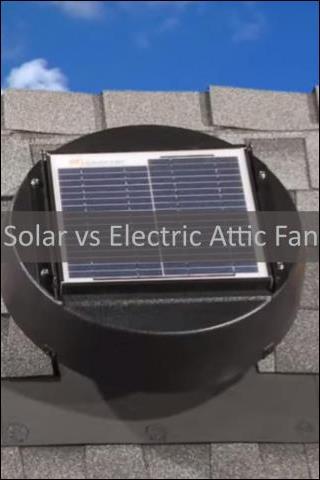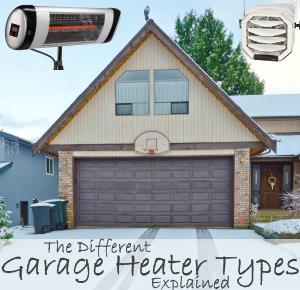
Now that summer is here, have you visited your attic lately?
What? You say it’s too hot up there?
Excess heat in your attic is actually an excellent reason to venture up the attic steps. That is, in order to install an attic fan, or Power Attic Ventilator (PAV).
Why install an attic fan?
In the summer, the sun’s heat on your roof radiates into your attic, and can raise its temperature to over 150 degrees Fahrenheit. Needless to say, this bakes everything in your attic and can damage valuable stored items. The extra heat also radiates into your home, making your A/C run overtime. In a case like this, the passive ventilation from your roof soffits isn’t enough. An attic fan is needed to actively vent the excess heat.
Attic fans can also help in winter. In cool weather, the heat differential between the warm inside air and the cold outside air can cause moisture to condense in the attic. This can lead to serious problems, including rotting trusses and joists, mold growth, dangerous ice dams and damaged insulation. The additional ventilation that a PAV provides helps prevent these problems.
Two types of PAVs: solar versus electric attic fans
When selecting an attic fan, your first choice is to decide between installing a PAV that runs on standard electricity, or a solar PAV. Let’s take a look at the advantages and disadvantages of solar versus electric attic fans:
Electric PAVs
Electric attic fans operate by means of a thermostat. When temperatures rise above a certain level, the fan kicks on.
-
Electric attic fan pros:
Electric PAVs are typically cheaper than solar powered ones. Also, they can run at any time, so if your attic is still hot at night they will continue to vent it.
-
Electric attic fan cons:
An electric attic fan must be hard wired into your home by an electrician. The cost of this service can cancel the cheaper price of the unit. It also requires significant electricity to run — so much so that you may not see much difference in your overall energy bill, even though your air conditioning may be running less.
Electric fans can also emit harmonic noise, which is bothersome to some people.
Solar PAVs
Solar attic fans, as the name implies, run on solar power. Each unit contains a small photovoltaic array. It runs only when the sun is up, working proactively by preventing heat buildup throughout the day.
-
Solar attic fan pros:
A solar attic fan is a self-contained unit. A homeowner can easily install it. Even if you prefer a professional installation, the labor costs will be lower since it doesn’t require any additional wiring. Plus, solar attic fans are typically whisper quiet.
Solar PAVs also qualify for the 30 percent Federal residential solar energy tax credit, which has been extended through 2016. The solar tax credit provides up to $1,500 credit on the fan, installation and sales tax.
Probably the biggest advantage of a solar attic fan is the energy savings over time. Once installed, a solar fan costs nothing to run. Compare that to a 250-watt electric fan, which will typically use 60 kilowatt hours per month when running 8 hours per day, and 180 kilowatt hours per month running continuously. At a national average electric rate of over 10 cents per kilowatt hour, you can see that your solar fan will pay for itself in short order. For this reason, most energy experts agree that solar attic fans are far more effective than regular electric fans.
-
Solar attic fan cons:
The higher unit price for solar fans is the biggest reason some people still opt for conventionally powered attic fans.
Also, a solar unit does depend on the sun to run, so you can’t run it at night. However, because it starts early in the morning when the air is cool, this generally does not hinder performance; and, in the event of a power outage, your attic will continue to vent.
A final note on attic fans
PAVs must be properly sized to your attic in order to be effective. Most small units such as those sold in chain stores will require more than one unit to vent a larger attic. This is undesirable because it results in more roof penetrations. It’s also very important to be sure the passive ventilation in your attic is functioning properly before you install an attic fan. If you are unsure how to proceed, consider consulting with an expert who can help determine the best attic ventilation solution for your home.
You might also like to read:
• How Can Renewable Energy Sources Be Incorporated In Your Home?
Category:




